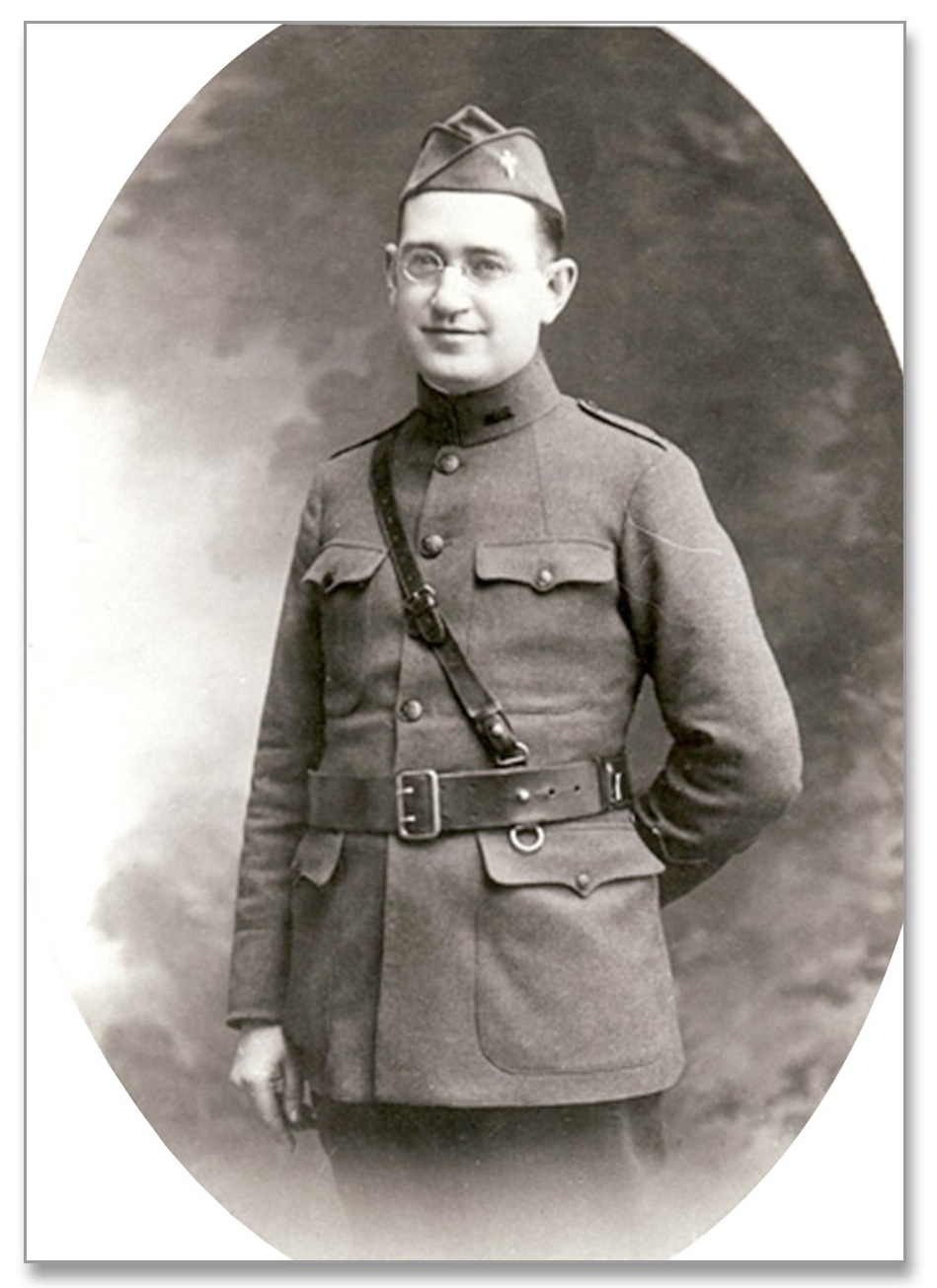
BEDFORD-STUYVESANT — July 28 will mark the 110th anniversary of the start of World War I, and the heroism of a priest from the Diocese of Brooklyn is etched into history.
Servant of God Msgr. Bernard Quinn (1888-1940), who is now on the road to sainthood, served as an army chaplain at the tail end of the war and suffered injuries from a mustard gas attack that would haunt him later in life.
In 1917, then-Father Quinn — he wouldn’t be named a monsignor until several years later — answered a call issued by Brooklyn Bishop Charles McDonnell for priests to volunteer as military chaplains. By the time the U.S. entered the war in 1917, the conflict in Europe had raged for three long, bloody years.
In 1918, Father Quinn was assigned as a chaplain to the 333rd Machine Gun Infantry Regiment stationed in France and served at the front.
The regiment was struck by a mustard gas attack by the Germans in the waning days of the war.
Father Quinn survived but was still suffering the effects of the mustard gas years later, said his great-niece, Dr. Eileen Quinn Knight.
“He contracted stomach cancer as a result of the gasses of World War I,” she told The Tablet. The cancer ultimately killed him in 1940 at the age of 52.
According to “Quintessential Priest: The Life of Father Bernard J. Quinn,” by Msgr. Paul Jervis, Father Quinn was appalled by the racism he saw in the military. In his book, Msgr. Jervis recounted one story of a dying black soldier’s last moments. A Protestant chaplain refused to pray over him, so Father Quinn stepped in to pray for the dying man.
The war ended when the Armistice went into effect on Nov. 11, 1918 — shortly after Father Quinn reported for duty in France — but he remained in the country to minister to injured soldiers in field hospitals.
Knight, who grew up hearing family stories about Msgr. Quinn, said he likely won the trust of the soldiers because of his warm personality.
“He was always happy, and he made people laugh,” she said. “He always found the funny side of life.”
It was while he was in France that Father Quinn formed a devotion to St. Therese of Lisieux.
His devotion started with a book. One day, in the barracks library, he was looking for something interesting to read when he came across “The Story of a Soul,” a biography of St. Therese of Lisieux, the “Little Flower.” The book would change his life.
In reading about the life of the “Little Flower,” he came to admire her a great deal. So much so that, a decade later, when he established an orphanage for black children in Wading River on Long Island, he named it the Little Flower in honor of her.
Meanwhile, back in France, while he was busy serving the spiritual needs of wounded soldiers, Father Quinn learned that the military base was located near Alencon, the community in Normandy where St. Therese had lived as a child.
Father Quinn requested and received permission to celebrate Mass in the house where she lived — making him the first priest to celebrate the Eucharist there before the home became a national shrine.
Father Quinn returned to the Diocese of Brooklyn determined to continue tending to the spiritual needs of black Catholics. In 1921, he helped establish St. Peter Claver Church in Bedford-Stuyvesant, the first African-American parish in the diocese.
In 2019, Bishop Emeritus Nicholas DiMarzio opened a cause for canonization for Msgr. Quinn. At that point, Msgr. Quinn was given the title Servant of God.
Knight said her family has always been very proud of her great-uncle’s military service.
“He attended to the needs of the men in battle in France,” she explained. “His mind was on the men and their needs.”

You provide inspiring articles and very informative articles on more theological issues and lots of important news about our Holy Father. Thank you.